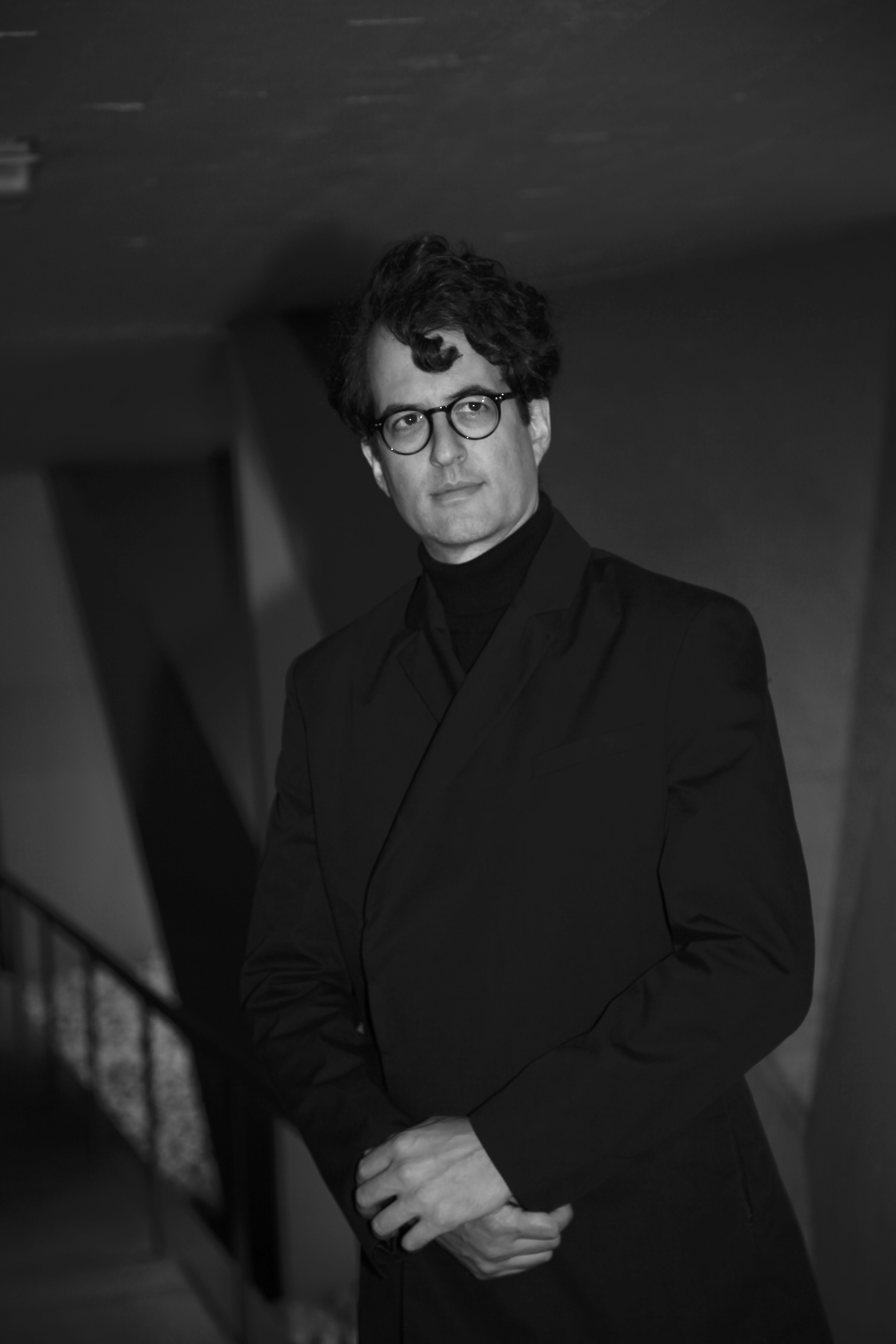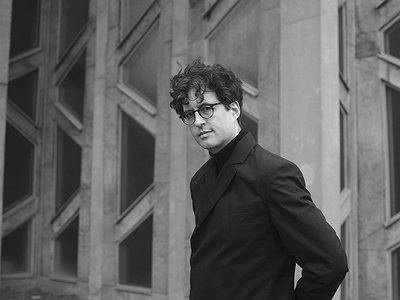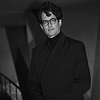Name: Nicolas Bougaïeff
Nationality: Canadian
Occupation: Producer, composer
Current Release: Nicolas Bougaïeff's EP1 is out via NovaMute January 11th 2024.
Gear and Software Recommendations: Moog DFAM, it’s just so much fun and immediate. The Oberheim OB-6 looks, feels, and sounds incredible. A pleasure to use.
[Read our feature on the Moog DFAM]
If you enjoyed this Nicolas Bougaïeff interview and would like to stay up to date on his music, visit him on Instagram, Facebook, Soundcloud, and twitter.
The views of society towards technology are subject to constant change. How would you describe yours?
I am an optimist in the sense defined by David Deutsch. The future is open, it’s our duty to be optimistic and make it a good one.
Technology, when put to good use, is fantastic. In the specific case of electronic music, technological innovation and musical innovation go hand in hand.
What were your very first steps in music like and how would you rate the gains made through experience - can one train/learn being an artist/producer?
My first steps with electronic music were teaching myself programming and composing music with early tracker software. The rave scene in my hometown was vibrant and I got the opportunity to play live for the first time when I was 17.
Of course you can learn to be an artist and producer. Quantity is the process and quality is the result. As much listening and as much producing as time will allow. I spent so much of my time learning (passionately!) about theory and technology. That’s a great way to become a musicologist or technologist, both of which I’ve done professionally, but they’re only tangentially beneficial for artistic development.
The most powerful thing you can do to become a better producer is to produce more.
Making music, in the beginning, is often playful and then becomes increasingly professionalised. How important is playfulness for you today and if it is important, how do, concretely, you retain it?
Playfulness is about embracing constraints. And sometimes to remain playful, I have to rebel and overstep my chosen constraints. And then maybe I won’t release that particular track, but allowing myself to oscillate between discipline and rebellion is part of the game.
Professionalising music involves all sorts of additional fields: marketing, branding, and such. Those are distinct from the creative process. The creative process exists in a protected space, professionalizing the output is a process that comes after.
Which other producers were important for your development and what did you learn from them?
So many! I grew up with 90s psytrance, Trance Europe Express compilations, mixtapes and mp3s downloaded from irc. Thunderdome compilations were a guilty pleasure.
I didn’t realise it at the time but I learned about tempo modulation from Rage Against the Machine and Hallucinogen. They do it all the time and playing with tempo fascinates me to this day.
Autechre’s Confield album really did it for me because of the polytemporality.
From Infected Mushroom I learned, belatedly, about quantity. Erez and I are the same age, I remember briefly chatting with him on ICQ back in the day. Watching their project blow up I understood years later what kind of sustained effort it was. They were in the business of producing hundreds of tracks from day one.
X-Dream was a huge influence because they seemed to be able to have deeper bass than anybody else, even at a fast tempo. Nearly 20 years later I had the privilege of collaborating with Marcus Maichel, it was a dream come true.
That got me on the path of exploring exactly which range of frequencies can work on the dance floor. I now know that the 30 to 40 Hz range I was enthralled with is great, but maybe works best for dramatic, cinematic, dubby, or experiential vibes, whereas slightly higher frequency bass content between 50 and 70 Hz can be more effective for high bpm techno. Tricky stuff.
In more recent years, Robert Hood has been a huge influence. His track “Minus” epitomises minimal techno. I love his essentialist approach.
Wolfgang Voigt. Basic Channel. Floating Points. Reinier Zonneveld more recently, the broadness of his palette is incredibly inspiring. I struggled with the very concept of genre for so many years and this guy’s approach is not only to embrace but absorb as many as he can. Love it.
[Read our Basic Channel's Moritz von Oswald interview]
How and for what reasons has your music set-up evolved over the years and what are currently some of the most important pieces of gear and software for you?
I got my speakers about 20 years ago, a pair of Mackie HR824. Then 10 years ago I got Sennheiser HD-650s. I check my mixes on earbuds, laptop speakers, bluetooth speakers, everything. A variety of loudspeakers is really important. I plan on getting a pair of ADAM speakers next. I love going to friends’ studios and checking my tracks there.
In terms of software Ableton Live is essential. So are modern dynamic EQs and multi-band compressors. I use Fabfilter Pro Q-3 and Fabfilter Pro-MB all the time. Ohmforce Ohmicide is the best distortion plugin ever, the feedback algorithms are completely wild.
Have there been technologies which have profoundly influenced, changed or questioned the way you make music?
Embracing distortion, saturation, all sorts of tone shaping, that made a stark difference. I really love pure synthetic sound, computer music vibes, but I also love a wild primal vibe. There’s a real tension there.
My sounds were very clean for a long time. The day I started using distortion, my first pedal was a Metasonix F-1, opened up a whole new chapter.
What is the relation between innovative tools and "innovative music"?
From my ideal perspective, innovative music incorporates new techniques or materials at a fundamental level. Ligeti’s micropolyphony and Xenakis’ mass states strike me as such.
I do understand that for a lot of people and producers, innovation is rather at the level of style: a reflection and recombination of higher level elements or musical memes. I was driven to find new materials, so I ended up exploring tuning and polytemporality for years, trying to see if any of Cowell’s or Ives’ ideas could be realised in a techno context.
I created my own idiosyncratic tunings and explored prime tuplets. I think what Rrose is doing is very beautiful and interesting.
I guess I am interested in innovation that riffs on stylistic elements from a rather broad spectrum.
And regarding tools, you have to realise the ideas by any means necessary, which sometimes mean creating a Max for Live device or collaborating with a coder or hardware engineer.
Late producer SOPHIE said: “You have the possibility with electronic music to generate any texture, and any sound. So why would any musician want to limit themselves?” What's your take on that and the relevance of limitations in our set-up and process?
Art necessitates constraints. Choosing constraints is a very important part of the creative process.
From the earliest sketches to the finished piece, what does your current production workflow/process look like?
I make hundreds of sketches to explore ideas. I make a track when I commit to make a track, more often than not starting from scratch but sometimes borrowing haphazardly from sketches.
From your experience, are there things you're doing differently than most or many other artists when it comes to gear and production?
I shape sounds with EQs, over and over, resampling the results. The initial synthesis or sampling is usually very simple, I process the sound until I’m happy.
Other people seem to be happy with spending more time selecting a sound they like in the first place. I enjoy transforming a sound until it works.
Nicolas Bougaïeff Interview Image (c) the artist
In relation to sound, one often reads words like “material”, “sculpting”, and “design”. Do you feel these terms have a relationship to your own work of and approach towards sound? Do you find using presets lazy?
Sure they do. Even if some of my sounds are ultimately very simple, noise bursts or short tones, I spend a lot of time to make them fit in the mix.
Presets are great, but they are often more complex than what seems to fit in my tracks. If I use a synth plugin, I usually start with the raw oscillator and work from there.
Production tools can already suggest compositional ideas on their own. Which of these have proven particularly fruitful in this regard?
The absolute precision of computers really does it for me. I have friends who are deep in the microtonal scene, in the contemporary music scene, and I am always thrilled to work with tools that let me do those techniques with perfect accuracy.
To some, the advent of AI and 'intelligent' composing tools offers potential for machines to contribute to the creative process. What are your hopes, fears, expectations and possible concrete plans in this regard?
I’ve been working with AI a bit, feeding it pages and pages of my notes on projects, notes I write for visual collaborators, and it is really fantastic to produce short summaries.
Generating wholly new content has been unsatisfactory so far, but it’s really exciting in general. I would hope to be able to feed AI with all my sketches, all my tracks, all my work from the past 25 years, and have it suggest options for what I’m working on. Basically, the DAW equivalent of Copilot, trained on my own data.
Technology has continually taken on more steps of the compositional process and "creative" tasks. From your point of view, where does "technology" end and "creativity" begin?
Creativity is about the output that results from a person making decisions. In many cases, the creator is also the craftsperson, but not always.
Technology is merely a set of tools wielded by the creator and the craftsperson or both.
If you could make a wish for the future directly to a product developer at a Hard- or Software company – what are developments in tools/instruments you would like to see and hear?
I am already in contact with a number of hardware and software developers.
Endorphin.es implemented tuplet support in their Ground Control sequencers. Modor improved tuning support in their NF-2 synths and added tuplet support in their DR-1 drum machine. Five12 extended tuplet support from 16:16 to 32:32 in their Vector sequencer. Cutelab NYC made a custom firmware version for their Messed Up module.
I’ve been working with an engineer on a secret project, a Eurorack module with very special clock features. I was thrilled to see improved tuning and tuplet support finally make its way into Live 12, recently announced by Ableton.





